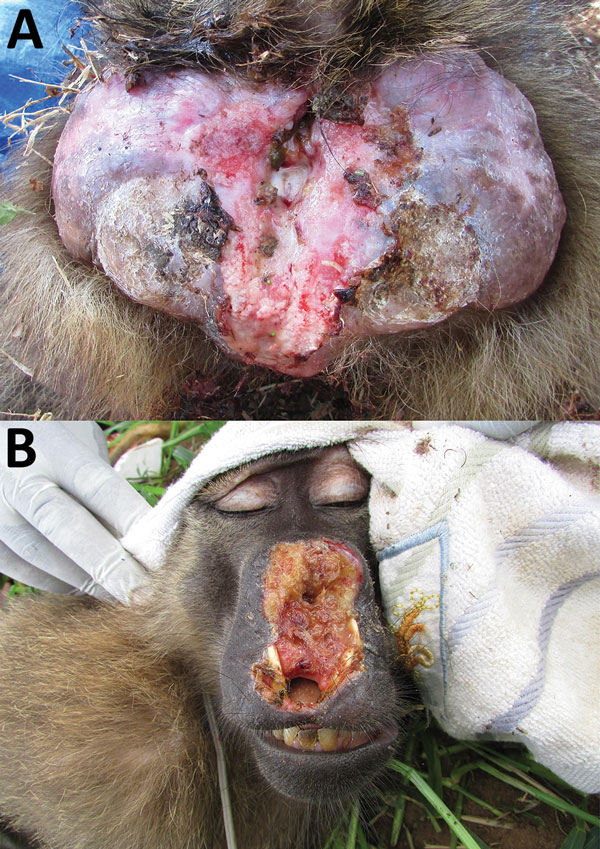Volume 24, Number 6—June 2018
Research
Widespread Treponema pallidum Infection in Nonhuman Primates, Tanzania
Figure 2

Figure 2. Treponema pallidum–induced clinical manifestations affecting olive baboons (Papio anubis), Tanzania. A). Lesions on the anogenital area of animal at Lake Manyara National Park. B) Facial lesions of animal at Tarangire National Park. Orofacial lesions were found only in olive baboons.
1Deceased.
Page created: May 17, 2018
Page updated: May 17, 2018
Page reviewed: May 17, 2018
The conclusions, findings, and opinions expressed by authors contributing to this journal do not necessarily reflect the official position of the U.S. Department of Health and Human Services, the Public Health Service, the Centers for Disease Control and Prevention, or the authors' affiliated institutions. Use of trade names is for identification only and does not imply endorsement by any of the groups named above.